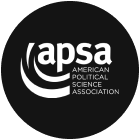Frontiers in Social and Behavioral Science features new research in the flagship journals of the Social Science Research Council’s founding disciplinary associations. Every month we publish a new selection of articles from the most recent issues of these journals, marking the rapid advance of the frontiers of social and behavioral science.

A survey of climate policy attitudes with 40,000 respondents across 20 countries suggests the key considerations that influence support for climate action.
This paper explores global perceptions and understanding of climate change and policies, examining factors that influence support for climate action and the impact of different types of information. We conduct large-scale surveys with 40,000 respondents from 20 countries, providing new international data on attitudes toward climate change and respondents' socioeconomic backgrounds and lifestyles. We identify three key perceptions affecting policy support: perceived effectiveness of policies in reducing emissions, their impact on low-income households, and their effect on respondents' households (self-interest). Educational videos clarifying policy mechanisms increase support for climate policies; those merely highlighting climate change's impacts do not.

In five survey experiments with over 15,000 adults, politicians who make false claims that reports of scandals are themselves false increase their support across partisan subgroups.
This study addresses the phenomenon of misinformation about misinformation, or politicians “crying wolf” over fake news. Strategic and false claims that stories are fake news or deepfakes may benefit politicians by helping them maintain support after a scandal. We posit that this benefit, known as the “liar’s dividend,” may be achieved through two politician strategies: by invoking informational uncertainty or by encouraging oppositional rallying of core supporters. We administer five survey experiments to over 15,000 American adults detailing hypothetical politician responses to stories describing real politician scandals. We find that claims of misinformation representing both strategies raise politician support across partisan subgroups. These strategies are effective against text-based reports of scandals, but are largely ineffective against video evidence and do not reduce general trust in media. Finally, these false claims produce greater dividends for politicians than alternative responses to scandal, such as remaining silent or apologizing.

In-depth interviews with low-income renters and rental-assistance program workers in Chicago suggest that bureaucratic systems and fear of eviction deter individuals from accessing government support.
Welfare programs place burdens on citizens to document their vulnerability through means-tested regulations in the United States, but theories of the welfare state do not necessarily account for mismatches between residents’ eligibility and their legibility to state infrastructure. Focusing on housing instability during the COVID-19 pandemic, we explain how Chicago residents who were eligible for emergency rental assistance programs (ERAPs) were unable to render their vulnerability and survival strategies legible to formal bureaucratic systems. This meant that despite the extensive federal funding allocated to state and municipal ERAPs during the pandemic, many people who were behind on rent did not even apply for support. Based on 76 in-depth interviews with low-income renters and 25 interviews with people working with these programs in Chicago, we document three mismatches between renters’ survival strategies and the requirements of formal bureaucratic systems of categorization. First, we illustrate how people who informally leased apartments in Chicago struggled to properly document their housing instability and the administrative burdens they faced in doing so. Second, because of acute housing precarity and fear of eviction, some renters prioritized their rent over other needs and then could not translate their vulnerability into ERAP eligibility. Third, we explain how undocumented Chicagoans often avoided ERAPs because of the perceived risks associated with becoming legible to the state. Being unable or unwilling to access aid created a cascade of other precarious conditions.

A new stochastic process that uses molecular sequence variation to model the evolutionary lineage of a sample is used to recreate historical population size trajectories.
Molecular sequence variation at a locus informs about the evolutionary history of the sample and past population size dynamics. The Kingman coalescent is used in a generative model of molecular sequence variation to infer evolutionary parameters. However, it is well understood that inference under this model does not scale well with sample size. Here, we build on recent work based on a lower resolution coalescent process, the Tajima coalescent, to model longitudinal samples. While the Kingman coalescent models the ancestry of labeled individuals, we model the ancestry of individuals labeled by their sampling time. We propose a new inference scheme for the reconstruction of effective population size trajectories based on this model and the infinite-sites mutation model. Modeling of longitudinal samples is necessary for applications (e.g., ancient DNA and RNA from rapidly evolving pathogens like viruses) and statistically desirable (variance reduction and parameter identifiability). We propose an efficient algorithm to calculate the likelihood and employ a Bayesian nonparametric procedure to infer the population size trajectory. We provide a new MCMC sampler to explore the space of heterochronous Tajima’s genealogies and model parameters. We compare our procedure with state-of-the-art methodologies in simulations and an application to ancient bison DNA sequences. Supplementary materials for this article are available online including a standardized description of the materials available for reproducing the work.

In Colombia, refugees fearing violence regularly use different strategies to evade identification in public spaces and avoid violence from their persecutors.
Much anthropological scholarship on war—particularly “civil war”—focuses on violence perpetrated between organized political groups within the confines of a national space. In contrast, this article examines how “internal armed conflict” manifests across international borders, irrupting as interpersonal violence in spaces that are supposedly external to war. More specifically, I demonstrate how “the Colombian armed conflict” unfolds between refugees and their persecutors in Quito, Ecuador, through fleeting encounters based upon processes of life-threatening recognition. These everyday encounters constitute “intimate war,” a relational condition of world-making involving terrifying social attachments—threatening verbal and physical gestures and cues—between “strangers,” or people who are not necessarily familiar with each other. In this context, refugees enact strategies of evasion to avoid detection by their persecutors, such as bus hopping, visually scanning their surroundings, and avoiding other Colombians. Terrifying encounters across borders, and refugees’ strategies to avoid them, unsettle normative assumptions about the desirability of recognition, where and how war happens, and what constitutes escape.

An examination of the scientific methods used to study the mummy of an ancient Egyptian queen illuminates how medical history is constructed.
This article traces the scientific afterlife of the mummy Queen Henhenit from excavation and circulation to examination and display in twentieth-century Egypt. Believed to have the oldest vesicovaginal fistula in medical history, Henhenit’s body held large implications for global anthropology and the practice of medicine in a newly independent Egypt. Henhenit’s story illuminates material histories of race and reproduction. This article examines this fictive linking of ancient and living women’s bodies and how these women became objects of scientific observation and study, largely without their consent. It argues that pelvic bones and labor power of Upper Egyptian women took on new scientific and cultural meanings in the first half of the twentieth century as scientists and social reformers returned to the womb seeking answers to the “puzzle” of Egyptian racial origins and hopes to decrease the country’s infant mortality rate. As such, it reflects on the limits and limitations of thinking with women’s bodies as material archives of history.

A proposal to measure the effects of early childhood development programs using a range of social and emotional competencies in addition to traditionally measured academic skills.
Developmental theory has long emphasized a range of skills that young children need for healthy development across the life course. Nevertheless, most evaluations of early childhood programs and policies have focused on measuring a somewhat limited set of competencies. In this article, we explore this “streetlight effect” in early childhood intervention research and propose an initial set of skills that we argue should be prioritized alongside traditionally measured outcomes as targets of intervention during the preschool period (i.e., between ages 3 and 5 years). These skills, which we call the foundations of learning and development (FOLD) skills, include both well-studied and emerging constructs such as curiosity, creativity, self-regulation and executive function, critical thinking, perspective taking, and internal representations of self. To better understand FOLD skills’ potential as more practical, effective, and inclusive targets of early childhood programs and policies, we review research regarding each skill’s malleability, measurability, predictive validity, and universality. We end with a set of future directions for the field, including the need to (a) formulate a more inclusive taxonomy of FOLD skills that incorporates currently omitted competencies relevant to marginalized populations, (b) measure these skills in scalable and actionable ways, and (c) enhance or modify intervention strategies to optimize the development of these FOLD skills in the preschool period.






